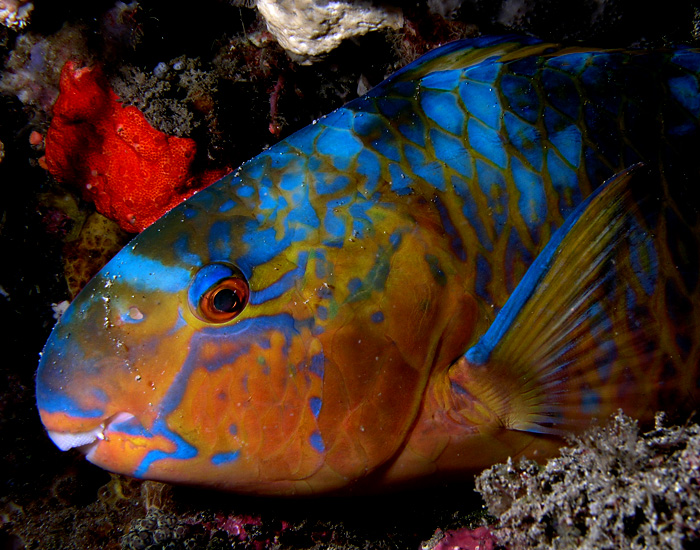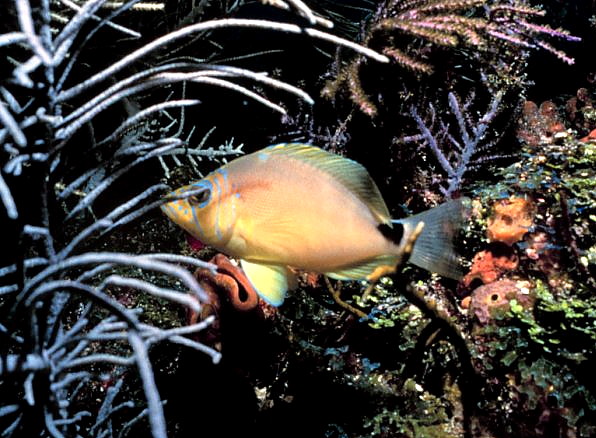 With the holidays upon us I decided to say a few words about some exciting new nano tank kits coming to us from Fluval. Not long ago we introduced you to the Fluval Edge aquarium, the unique nano aquarium from Hagen with the Frank Lloyd Wright-like design. Hagen has developed a whole series of Fluval aquariums over the last several months to complement the Edge tank, the first of which is the Fluval Chi. Hitting the market earlier this summer, the Fluval Chi is another unique aquarium, designed to radiate positive energy (“chi” is roughly translated as energy in Chinese). Read More »
With the holidays upon us I decided to say a few words about some exciting new nano tank kits coming to us from Fluval. Not long ago we introduced you to the Fluval Edge aquarium, the unique nano aquarium from Hagen with the Frank Lloyd Wright-like design. Hagen has developed a whole series of Fluval aquariums over the last several months to complement the Edge tank, the first of which is the Fluval Chi. Hitting the market earlier this summer, the Fluval Chi is another unique aquarium, designed to radiate positive energy (“chi” is roughly translated as energy in Chinese). Read More »
Pure Confusion – Finding the “Right” Water for Your Aquarium
 One common question that we receive about setting up new aquariums is about the most basic ingredient to the aquarium, the water that goes into it. There are a lot of terms that can get confusing when someone is trying to determine how to fill their aquarium and from what source. The options can be staggering – tap water, bottled water, prefilters, and so on – and starting with the right foundation can make all the difference, from the smallest betta bowl to the largest reef system.
One common question that we receive about setting up new aquariums is about the most basic ingredient to the aquarium, the water that goes into it. There are a lot of terms that can get confusing when someone is trying to determine how to fill their aquarium and from what source. The options can be staggering – tap water, bottled water, prefilters, and so on – and starting with the right foundation can make all the difference, from the smallest betta bowl to the largest reef system.
Tap Water
This is probably the easiest and most accessible water source in most areas. Whether you get your water from a municipal water sources or from a well, it doesn’t get much easier than going to the nearest sink to fill your bucket or tank. Its ease is definitely a benefit, but keep in mind that municipal water sources will usually contain chlorine or chloramine to kill bacteria and well water sources may contain phosphates or other organics. Tap water can be used, but should be treated or purified to remove these materials before it goes into your aquarium. Read More »
Fish News – Mucous Covering Protects Sleeping Parrotfishes from Parasites
 Hello, Frank Indiviglio here. Marine aquarists and divers are well-aware of the mucous “sleeping bags” produced by Parrotfishes and certain Wrasses each night. It was assumed that these cocoon-like structures discouraged eels, crabs and other nocturnal predators – perhaps the mucous hid the sleeper’s scent, or was bad-tasting or toxic. A study at Australia’s Queensland University, however, has revealed that the mucous cocoon’s main purpose may be to deter external blood-sucking parasites – the first known example of such a phenomenon.
Hello, Frank Indiviglio here. Marine aquarists and divers are well-aware of the mucous “sleeping bags” produced by Parrotfishes and certain Wrasses each night. It was assumed that these cocoon-like structures discouraged eels, crabs and other nocturnal predators – perhaps the mucous hid the sleeper’s scent, or was bad-tasting or toxic. A study at Australia’s Queensland University, however, has revealed that the mucous cocoon’s main purpose may be to deter external blood-sucking parasites – the first known example of such a phenomenon.
A Good Reason to Hide
Writing in the November 17, 2010 issue of the journal Royal Society Biology Letters, researchers have established that sleeping Parrotfishes suffer numerous parasite attacks when deprived of their mucous cocoons (I couldn’t determine how they removed the cocoons without waking the fish!). Parrotfishes with intact cocoons sleep peacefully through the night, and were rarely bitten. Read More »
Role Reversal – Gender Switching in Saltwater Fish
 In our modern society, boys and girls are raised to be men and women and play equal roles in everything from defense to child-rearing. The animals kingdom isn’t as simple. With some animals, males and females have specific roles to play in their community and are nurtured for their positions. Many of the fish we keep in our aquariums have very different strategies. Weighing the balance between reproducing and surviving plays a huge part in their life history, right down to the most fundamental concepts of gender, size, and appearance.
In our modern society, boys and girls are raised to be men and women and play equal roles in everything from defense to child-rearing. The animals kingdom isn’t as simple. With some animals, males and females have specific roles to play in their community and are nurtured for their positions. Many of the fish we keep in our aquariums have very different strategies. Weighing the balance between reproducing and surviving plays a huge part in their life history, right down to the most fundamental concepts of gender, size, and appearance.
A “hermaphrodite” is an organism that has both male and female reproductive abilities. While this is usually very rare in animals like birds and mammals, it is extremely common in plants and some invertebrates. Biologically speaking, if the chances of a plant or animal running across another of its kind are low, the chances of it finding another with the opposite sex as itself that it can reproduce with are even lower. Therefore, not having an assigned gender or being able to act as both genders can be beneficial. Many plants, animals and invertebrates use this strategy, but we’ll focus on fish in this blog.
Fish like wrasses, parrotfish, anthias and clownfish use “sequential hermaphroditism”, meaning that instead of having both sets of reproductive organs, the fish starts out as one gender and at some point is triggered to switch to another. There are two types of sequential hermaphroditism that we can witness in the aquarium trade: protogyny and protandry. Read More »
New Insights into the Mammal-Like Parenting of Discus Fishes and Eelpouts
 Hello, Frank Indiviglio here. Aquarists have long known that Discus Fish (Symphysodon spp.) produce mucus with which to feed their young. However, recent studies revealed unexpected new parenting behaviors, leading some ichthyologists to compare them to mammals. Just as surprising is the discovery that the European Eelpout (Zoarces viviparus), a commercially valuable marine fish, actually suckles it young with a milk-like secretion!
Hello, Frank Indiviglio here. Aquarists have long known that Discus Fish (Symphysodon spp.) produce mucus with which to feed their young. However, recent studies revealed unexpected new parenting behaviors, leading some ichthyologists to compare them to mammals. Just as surprising is the discovery that the European Eelpout (Zoarces viviparus), a commercially valuable marine fish, actually suckles it young with a milk-like secretion!
Weaning Behavior
The surprising new information about Discus appeared in the October 29, 2010 issue of the Journal of Experimental Biology. While observing a breeding colony of the much-admired South American fishes, University of Plymouth (UK) biologists noticed that both parents avidly fed the young with mucus secretions for 2 weeks. The fry were allowed to feed from an adult’s body for approximately 10 minutes, after which the ravenous little fellows were “flicked” onto the mate for more food. Read More »
 That Fish Blog – Aquarium Advice and Information
That Fish Blog – Aquarium Advice and Information
